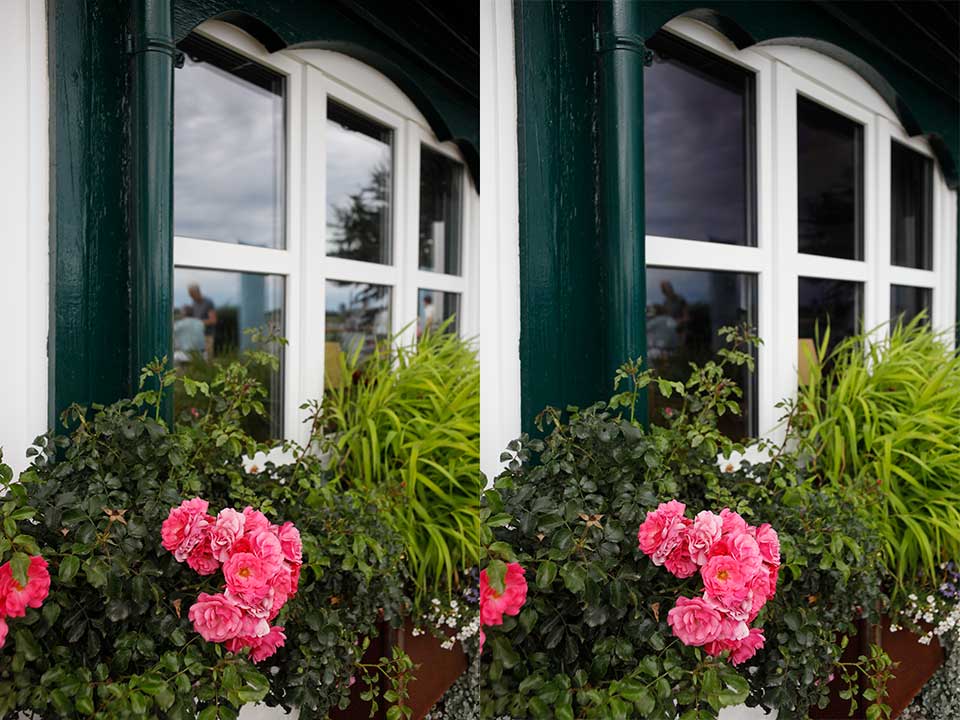Effect and use
A polarising filter can be used to filter out or eliminate polarised light. In practice, this makes it possible to suppress reflections on, for example, water, a pane of glass or a painted surface. In the case of water, it is possible to see through the surface of the water. The same goes for glass. And reflections can be minimised on painted surfaces, such as a car.
The blue of the sky is also partly made up of polarised light. A polarising filter can filter this out and produce a dark, deep blue sky in the image.
The same is true of a rainbow: Its colours can also be enhanced with a polarising filter. Colours and contrasts are enhanced with a polarising filter.
Polarising filters in practice
Polarising filters are mounted directly in front of the camera lens. Circular polarising filters are best, as they allow the camera's exposure and focus metering to work without error. As the strength of the filter's effect depends on how the polarised light waves hit it, it can be rotated. By rotating the filter ring, you can check which parts of the image are absorbed and which are transmitted.
For sky blue, the strongest filter effect is achieved when the camera and the sun are at an angle of 90 degrees. At other angles, the effect diminishes, which can be seen very clearly in wide-angle shots: the sky will always have a gradient from light to dark blue. The filter should be used sparingly to achieve a realistic image.
The plane of oscillation of the light also has an effect on reflective non-metallic surfaces. Light with an exit angle of 30 to 40 degrees is reflected particularly strongly and is also oriented mainly vertically.
The effect of the polarising filter, especially in eliminating unwanted reflections, cannot be achieved with any software. Important to know: Polarising filters "swallow" light - up to two f-stops. The camera's automatic exposure system compensates for this loss.



